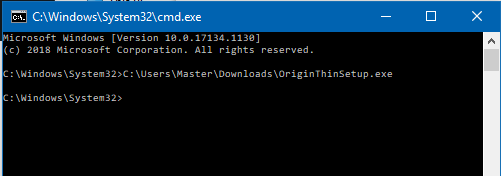

- Could not find or load qt platform plugin windows for mac#
- Could not find or load qt platform plugin windows .exe#
- Could not find or load qt platform plugin windows Offline#
- Could not find or load qt platform plugin windows download#
The qwindows.dll file is in compiler directory \plugins\platforms and the other files you’ll find in compiler directory \bin. Depending on your OS and compiler, the files you then need to copy vary slightly:īare bones 32-bit and 64-bit platforms directory Just build our fancy app in Qt Creator, then make a test directory on another computer without any Qt installed. Right now don’t edit or add any code, for our purposes an empty app window will do just fine. This is to simplify deployment, and if you’re using Visual Studio as your compiler, Microsoft disallows copying any of the debug. Once you’re in the project, switch it to Release mode. Click through and accept all the default choices. In Qt Creator, select a new Project, Applications and a Qt Widgets application. So let’s start by looking at deployment of an absolute bare bones app, let’s call it HelloQt. (And inside it are the important bin, lib and plugins subdirectories, more on that later.) I’ll be referring to that one as the compiler directory in this blog post. Instead, look in the other directory created, for Qt 5.5.1 it’s 5.5 it contains a subdirectory named after the compiler you selected, like clang_64, gcc_64, mingw492_32, msvc2013 etc., that’s where you’ll find the compiler specific Qt files which can be distributed safely to other computers. Important: that Tools subdirectory contains a version of Qt deployed for Qt Creator copying those files from the Tools directory will give you Bad Karma because they are customized for Qt Creator and *not* for your apps.

On Windows and Linux there will be a subdirectory called Tools which contains Qt Creator, Qt’s IDE (on the Mac there is no Tools subdirectory, instead there’s a Qt Creator.app). Inside that directory will be a couple of subdirectories, like Examples, Docs and Licenses. The files installed will be the same anyway, let’s assume you go with the online installer and accept the default directory name Qt.
Could not find or load qt platform plugin windows Offline#
The offline installer instead will default to a version specific directory, for Qt 5.5.1 it will prompt you with something like C:\Qt\Qt5.5 for MinGW on Windows.
Could not find or load qt platform plugin windows for mac#
It will prompt you for the main Qt install directory, the default is ~/Qt for Mac and Linux and C:\Qt for Windows systems. To simplify this blog post, let’s focus on the online installer. You can use the online or the offline installer.
Could not find or load qt platform plugin windows download#
In some environments that makes sense or is required (like when deplyoing Qt apps to iOS/iPhone) but let’s begin with the simple version: distributing Qt using DLLs/shared files.įirst let’s look at the stuff you get when you download and install Qt. For example, the MaintenanceTool app included in your Qt’s root directory is built that way (as well as Qt’s online/offline installer programs). Now, to simplify deployment of Qt apps to other PCs, you can build your app together with Qt statically.
Could not find or load qt platform plugin windows .exe#
exe could constitute a career-limiting move) but probably mostly because it supports so many different architectures and OS’es. Partially this stems from the early 90’s when Qt was initially designed (in those days, deploying a 2MB. DLLs that Qt uses for plugins, platform independency etc. h files that are designed this way (a humongous file like Windows.h is frowned upon) to the delegation of. Qt has (as you’ve probably discovered) the complete opposite design. But deployment problems are more or less nonexistent. People sometimes complain though, because even a simple ‘Hello World’ app weighs in to an approx. EXE file with minimal dependencies on the DLLs, in Windows for example it’s just the usual suspects like KERNE元2.DLL etc. After you’ve written and debugged a Go program, you issue the go build command. If you look at newer languages like Google’s Go, you’ll find an Everything and the Kitchen Sink™-flavored approach to deployment. (Want to skip the tourist talk? Jump to the rest of the post.) (Same here, Finder only says “App quit unexpectedly”, launch your app in Terminal to see this)


 0 kommentar(er)
0 kommentar(er)
